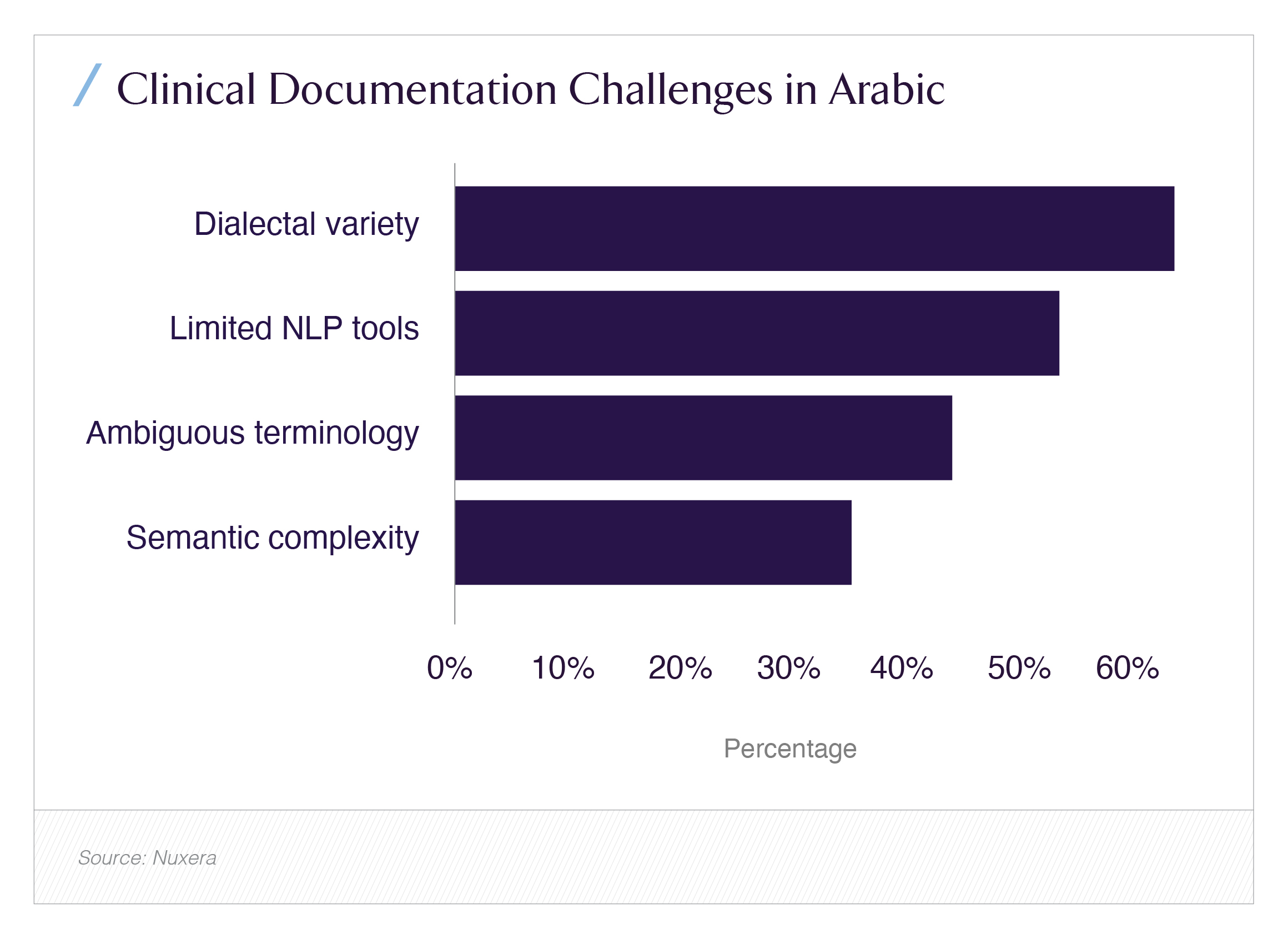A milestone was achieved in October 2025 when Riyadh-based healthtech startup Nuxera AI, in taking a step towards its aspiration of building an Arabic-first clinical AI platform, announced a whopping US$2.5 million as an additional advance amount to its project that is designed specifically for the Kingdom’s hospitals and healthcare clusters. With this investment, Saudi Arabia has given the world an undeniable signal about its deeper shift in the digital-health ecosystem, i.e., locally produced tools instead of imported ones, regionally-native AI solutions.
This article will show everything one needs to know about Nuxera AI, from what Nuxera is aspiring to build to what this raise means, from technical and regulatory challenges and the wider healthtech landscape to how it can be compared to other health-AI startups operating throughout the world.
A maturing market for digital health in Saudi Arabia
Now considered as a focused and foremost implication of Vision-2030, the digitising of fields has created important new markets in Saudi Arabia. One of these growing markets is predicted to be its digital health market, as can be understood by the September 2025 report, which shows that Saudi Arabia’s digital health market was estimated at around US$2.50 billion in 2024, and is now projected to reach about US$16.94 billion by 2033 (CAGR ~23.8 %).

Source: Grand View Research
A language and locale gap in existing global AI healthcare tools
Overcoming language barriers can be considered the crucial point in Nuxera’s aspirations in building an Arabic AI platform in healthtech, as previously most clinical-AI tools, documentation automation, and natural-language processing (NLP) systems were launched in English, ignoring other regional languages. This gap not only needed to be fulfilled for people to have better access but also created a big market opportunity for investors. Nuxera, in its finest attempt, has targeted 28 Arabic dialects and claims to cut clinical-documentation time by over 70 % giving exposure to a previously less noticed Arabic.
Regulatory and ecosystem readiness
Consistent with the common perception of readiness, Saudi Arabia is swift in issuing regulatory guidelines for digital health products. This initiative by the Saudi Food and Drug Authority (SFDA) has focused on software and AI systems for clinical use, with the ecosystem’s preparedness as the first priority by the Kingdom’s open data and AI authorities. These sophisticated initiatives will not only give a supportive environment for start-ups but will also strengthen confidence in Saudi Arabia’s markets for future endeavours.
Strategic national context
Nuxera’s step towards an Arabic-first clinical AI platform with a big preceding raise is giving a picture of Saudi Arabia’s claim to foster domestic innovation in the future, instead of relying on imports. Saudi Arabia’s emphasis on the fact that health is particularly on top of their agenda is supported by the measures taken in the context of improving operational efficiencies (in hospitals, documentation, clinical coding) and enabling AI-based analytics, and that is exactly what Nuxera is preaching through their endeavours.
What is Nuxera building?
Nuxera, as founded in 2024 by Amin El Hemaily (CEO), Asad Khan (CTO), and Nada Hassan (CCO), claims to be a regional “AI hub for healthcare”.
The principal units of Nuxera’s endeavour go as under:
• SERA:
A fast system where documentation span is reduced by more than 70 %, this engine is a conversation-capture and clinical-documentation one with functions of recording doctor-patient interactions (across 28 Arabic dialects) and automatically generating structured clinical notes coded in international standards (SNOMED, ACHI, SBS, ICD-10) and integrating with hospital systems.
• “Talk to Your Data” Engine:
A plain Arabic conversational analytics tool that helps hospital leaders inquire about operational, clinical, or financial data and receive insights quickly.
Why do these matter:
Operational efficiency:
Focused on reducing time and improving accuracy, this engine allows clinicians to focus more on patients and less on documentation.
Clinical-coding accuracy & reimbursement:
For the betterment of downstream analytics, audit readiness, and payer compatibility, this engine uses standardised terminologies (SNOMED, ICD-10).
Leadership analytics:
Overcoming data silos, this engine can help with enabling faster decision-making due to an Arabic-language interface among Arabic-speaking leadership.
Localization / dialect handling:
Another hurdle that this engine has overcome by supporting dozens of Arabic dialects is the barriers in the way of creating non-English AI tools.
Technical and linguistic challenges in Arabic clinical AI
As much as this “translating” might seem an easy task, it actually poses many challenges, as it is more intricate in nature than merely a translation. Important difficulties are as under:
Dialectal variation and diglossia
The main complexity regarding Arabic is that it is not one monolithic language. It has regional dialects that diverge greatly (Saudi, Gulf, Levantine, Maghrebi, etc.). Developing a system that recognizes speech faster and has NLP-capable models across 28 dialects is something overwhelming, as most of the clinicians not only use mixtures of Modern Standard Arabic (MSA) and dialect but also medical terms and codes that rely mainly on the English language.

Clinical domain complexity
Language tends to be more important when interviewing a client, asking about symptoms, diagnosis, and plans, and in many more domains of the medical field where clinicians interact with patients, along with codes (ICD, SNOMED), and structured outputs. Also, studies have shown that language barriers tend to have great effects in clinical settings, as a recent study, ‘Advancing Complex Medical Communication in Arabic,’ suggests. This study shows that domain-specific Arabic-clinical models outperform general models.
Integration with hospital workflows and systems
Rather than imagining and building into reality new ideas and imaginations, the AI must be planned to seep into existing systems, i.e., EHRs (electronic health records), HIS (hospital information systems), coding systems, and regulatory compliance requirements. Nuxera claims that this will tackle both public and private systems in real time and in the real world.
Regulatory, privacy, and data governance
The system must be designed in a way that not only protects sensitive patient data, consent, anonymization, security, and compliance (especially with Arabic language and regional regulations) but also ensures the privacy of each patient in the best way possible. Guidance can be taken from SFDA’s guidelines on digital-health products (MDS-G027).
Training data scarcity
As most startups had data and system interfaces in English and were taken as normal throughout the world, the need for creating one in regional languages was often ignored. The same goes for Arabic as well, where it was previously not taken seriously, and thus, annotated Arabic corpora were scarce. Ignoring this important aspect produced a hurdle for most startups, where high-quality speech recognition or clinical-note generation, substantial data collection, annotation, and validation were required.
Regulatory landscape
In August 2025, the Saudi Food and Drug Authority (SFDA) gave guidance about its jurisdiction regarding what kinds of software, medical-device software, and AI/ML systems fall under it. These guidelines are published in Guidance on Digital Health Products (MDS-G027).
Vision 2030 encompasses the regulatory sandboxes and health-innovation initiatives launched by Saudi Arabia.
Nuxera’s initiative is very much in accordance with Saudi Arabia’s regulatory and hospital-deployment considerations as it focuses on clinical-coding standards, data integration, interoperability, and audit readiness.

Hospital/cluster deployment challenges & opportunities
Smooth assimilation in hospitals is one of the aspects that needs to be addressed with priority, and luckily, Nuxera just did it, thus going on with the “no workflow disruption” agenda.
There is a big difference in the ways public-sector and private hospitals operate, like in process maturity, data readiness, and budget. Nuxera must give a system that is tailored to fulfill the requirements of both.
A massive challenge for Nuxera lies in the workforce, i.e., to see if there are enough clinician-champions, data engineers, and change-management personnel present to cater to the needs of deploying and managing AI-driven workflows in Saudi Arabia.
As stated earlier, Nuxera has announced more than 70% documentation-time reduction, thus catering to the documentation time saving, reduction in coding errors, throughput increase, and actionable analytics needs of hospitals.
Particularly when speech-interpretation and note-generation are happening in Arabic dialects, trust, explainability, and clinical adoption are crucial with AI models in this regard.
Saudi health-tech ecosystem: Local context and opportunity
Ecosystem maturity & investment
By giving priority to its digitisation under Vision 2030, Saudi Arabia has created opportunities and favourable conditions to encourage investment in digital health, along with the data/AI authority (SDAIA), paving the way for startups, leading to an increase in Medtech and digital-health investment into Saudi Arabia. This can be well understood by the 2025 market-size data (US 2.5 billion in 2024, projected ~US$16.9bn by 2033).
Talent and localisation
Since its plans to realise the dream of technology and AI-integrated systems in Saudi Arabia, the Kingdom has focused on more localisation in terms of workforce (Arabic-speaking engineers, healthcare professionals), use-case relevance (dialects, local regulatory codes), and data-sovereignty. Here, Nuxera positioned itself right at the centre as it is a Saudi-founded, Arabic-native clinical-AI company.
Competitive positioning within the region
While there have been small-scale healthtech endeavours in MENA mostly related to consumer-health apps, telemedicine, or remote monitoring, there’s a much less common trend related to building full-scale clinical-AI platforms for hospitals oriented to Arabic dialects and deep workflow integration, as does Nuxera. Thus, Nuxera can rightfully claim to be the pioneer in addressing the higher-barrier, higher-value segment (hospital clinical workflows).
Strategic national alignment
As per Saudi Arabia’s claims of modernising its whole country and its systems, including its healthcare system (public and private), improve efficiency, support medical tourism, and advance AI capabilities, Nuxera appeared at a time when its capabilities of reducing documentation burden, improving coding accuracy, and unlocking analytics set a crucial stage for future endeavours.
Global health-AI comparisons: Where Nuxera stacks up
To better understand the opportunities and differentiators, it will be helpful to compare Nuxera’s model to the health-AI startups being run around the world.
Global players
Taking the example of the U.S, it can be observed that most companies there rely greatly on English language speech/NLP, integrate with major EHRs (Epic, Cerner), and target large hospital systems in mature markets. Companies such as Nuance-Dragon (now part of Microsoft), Suki, Ambient Clinical Analytics, and others have built AI-driven documentation and ambient-listening platforms.
What differentiates Nuxera
Language and dialect:
While many countries rely on English for tech startups and AI, Nuxera can be differentiated as a native Arabic-first startup in the MENA region.
Regional regulatory/contextual fit:
Since Nuxera is a Saudi-founded, Arabic-native clinical-AI company, it has the leverage of localisation in terms of Saudi hospital coding, payer requirements, workflows, and language.
Emerging-market focus:
As global startups mostly opt for trending fields or already established fields, Nuxera has opted for a field where every step will be counted as a pioneering step, leaving a legacy to follow in the future.
Full-stack clinical analytics:
While global startups mainly focus narrowly on one layer, Nuxera has taken a bold step in assimilating operational and decision-support layers, i.e., conversation-capture + structured-note generation + leadership analytics.
Challenges remain
- While Nuxera is venturing into one of the biggest startups globally, its challenges are huge. Integration, change management, and measuring outcomes (time saved, error reduction) will make a big difference.
- Another challenge is the regulatory and clinical-validation barrier that can reveal itself in the form of peer-reviewed evidence of impact (documentation accuracy, coding correctness, downstream outcomes).
- Competitive challenge also poses a significant risk as other startups might go for the Arabic-language AI plans and can give Nuxera a tough time.
- With the requirements of proof-of-concept, clinician buy-in, and integration budget, capital intensity and sales cycle are another big challenge.
What impact could this have — and what to watch for
Potential impact
Time-savings:
Previously, huge documentation time was what caused clinicians’ time with patients to be sidelined. If there is really more than a 70% reduction in documentation time, as Nuxera announced, then it will bring a revolution in clinician time with patients.
Error and coding improvement:
Faster audits, billing, and analytics, along with structured notes mapped to global standards (SNOMED, ICD-10), will be revolutionary.
Leadership decision-support:
Faster and real-time Arabic-language queries and analytics that break down silos will lead to hospital management giving out quick responses.
Localization effect:
Digital transformation will accelerate due to the usage of Arabic-native tools, as this will lead to the uptake barrier being undermined.
Ecosystem offer-up:
As it has incorporated 28 Arabic dialects, in the future, Nuxera can go international, e.g., Gulf states, North Africa, and can become a leading export of Saudi Arabia.
What to monitor / risk factors
Clinical validation and outcomes:
While Nuxera has made claims about changing the landscape of healthtech in Saudi Arabia, it is crucial that these claims are actually seen practically on the ground. Questions like: are the claims borne out in real hospitals? What is the accuracy of note-generation and coding compared to human scribes? will be asked, and answers must be evident.
Integration effort and workflow disruption:
Nuxera’s another claim is smooth assimilation. While this looks easy and palpable, there will always be a need for training, integration, and change management.
Data privacy, security, and regulatory compliance:
The main risk factor will be the patient’s data and its security. Privacy management will be a key challenge.
Dialect-coverage and scaling:
It is easy to claim 28 dialects in a single system, but constant changes, refining, and addition of words will be a challenge.
Competition and platform lock-in:
If Nuxera is successful, which is very likely, there are chances that other startups will also integrate Arabic into their system. This will create a competitive environment and will need constant innovations to counter other startups.
Go-to-market and hospital procurement:
Finally, sales cycles will create a big challenge in terms of effective commercial strategy, references, and support infrastructure.
Conclusion
Nuxera’s innovative program encompasses a healthtech giant with an Arabic-first clinical AI platform, catering to the needs for a localised and inclusive ecosystem in the health field. Recently, a pre-seed US$2.5 million raise was fueled in the project, showing Saudi Arabia’s goal of digitising the country.
Claiming to integrate 28 dialects of Arabic, Nuxera caters language-and-localisation gap, and demand for clinical-AI tools, and if Nuxera succeeds, this will bring revolution in clinical-AI tools, documentation automation, and natural-language processing (NLP) systems. While risks of privacy and security, dialect coverage, and workforce lies, addressing them will set the stage for future endeavours.
Today, there is a massive race in the healthtech and MedAI fields. The main players in this race are languages and the health-innovation ecosystem. Nuxera’s step towards Arabic-first clinical-AI will provide an inspiration for future startups to build healthtech AI startups in other regional languages as well. This all can be well credited to Saudi Arabia’s Vision 2030 initiative, providing inspiration for other countries to provide a basis for technology and AI endeavours.


















